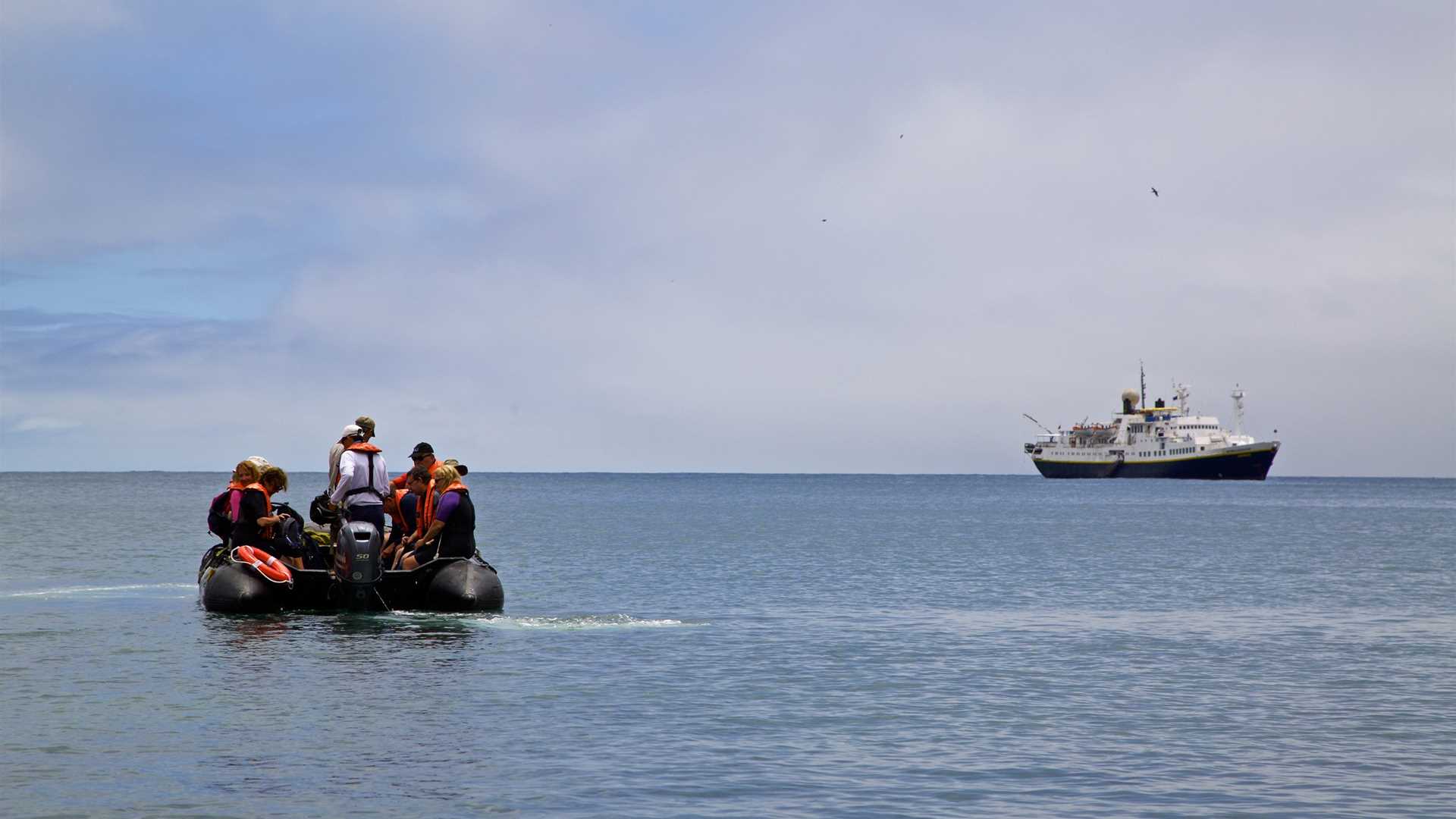As the sun begins to rise on the last full day in the Galapagos, discovery awaits. After sailing through the night, the National Geographic Endeavor arrives at San Cristobal Island, the first island explored by Charles Darwin. Today’s expedition begins at Punta Pitt, located on the easternmost island of the archipelago. Surrounded by towering cliffs and the constant honking of boobies, we pass a large manta ray while arriving on the tan sandy beach. Groups form to begin the climb up through the steep valley. The passage through to the plateau feels like moving through time, with years and years of geological movement compacted into the surrounding cliff walls. Nesting blue-footed boobies dot the rugged landscape, creating detours with nests directly on the trail. A red-breasted cormorant attempting to steal fish from a nesting pair of boobies reminds us that life in the Galapagos stops for no one. Panoramic views greet us at the top, along with a new sound we haven’t heard yet. What is that? Look closely; a red-footed boobie is just below the cliff. Nesting pairs add a beautiful red and blue color to the brown landscape, reminding us the importance of this island for all three species of boobies found here.
Hikers find respite from the heat back at the beach, with many trading hiking boots and socks for scuba fins. Soon the water is filled with multi-colored snorkels exploring the underwater cracks and crevices created by thousands of years of tidal movement. The happiest of all seems to be a playful sea lion, instantly engaging its human counterparts with flips, twirls, and flipper-slaps. Although leaving this beach paradise is difficult, we soon return to the ship knowing full well that the day holds even more secrets for all to uncover.
With appetites secured once again from the delicious lunch prepared by the amazing staff we embark on the expedition’s last beach landing, found at Cerro Brujo, or “Wizard Hill”. The massive cliff walls, sculpted by the Pacific, give way to a long stretch of white sand surrounded by turquoise blue water. Leaving the Zodiac behind, we begin to walk on what feels like white flour poured on the ground, curling through your toes. We are not alone either, as numerous sea lions have taken the best spots for sunbathing. Large bulls, little pups, and watchful mothers soon become our beach neighbors, barking and grunting as if to say, “What took you so long?”
The final evening of the voyage provides a way to reflect on all we have seen throughout this wondrous adventure. Smiling faces and boisterous laughter help us all remember the unique encounters and experiences found throughout the week. Even though we began this voyage as strangers, we realize the bonds created will last lifetimes. But with goodbyes comes an understanding that our true expedition for preservation has just begun, and that quest will last through generations. The passion and dedication our Ecuadorian naturalists consistently displayed is a lesson we all have learned; now it is our turn to bring that passion home with us to teach the next generation of explorers.






